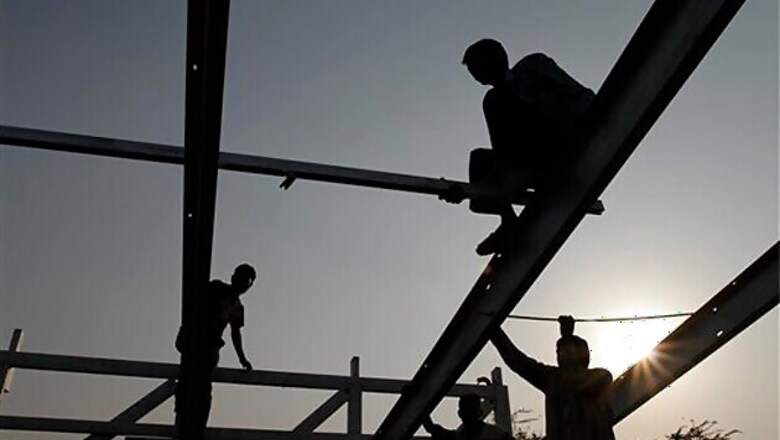
views
An expansion in farm output and some infrastructure helped the economy recover slightly in the September quarter, but growth still hovered close to decade lows, tempering hopes of a sustained rebound ahead of elections due next year.
September's figure of 4.8 per cent was the fourth successive quarter of economic growth below 5 per cent and remained far below the 8 per cent the government says is needed to reduce poverty and provide jobs for its burgeoning young population.
A Reuters poll of economists forecast the economy would grow 4.6 per cent in the quarter.
Economists were cautiously optimistic the new number meant the worst was over for Asia's third-largest economy, but said high inflation and political uncertainty meant it was too early to predict a quick recovery.
"The GDP data has more or less been in line with expectations, suggesting that the slowing cycle has bottomed," said Upasna Bhardwaj, an economist with ING Vysya Bank.
Stubbornly high inflation led by runaway vegetable prices is a major headache for the country and led the central bank to raise interest rates at the last two meetings, painful for businesses looking for credit to expand output.
"From a policy perspective, today's GDP print is unlikely to change the course of action by the Reserve Bank of India," Bhardwaj said.
The Congress party is pinning its hopes on a growth rebound to help win back voters in a national election expected by April. Opposition prime ministerial candidate Narendra Modi has made the depressed economy and high prices a central plank of his campaign.
After a successful decade of chaperoning Gujarat's economic growth, Modi is viewed by some as the saviour of the country's battered growth story.
GOOD MONSOON
Economic growth virtually halved in two years to 5 percent in the fiscal year that ended in March - the lowest level in a decade in which the Congress has dominated Indian politics. Most economists surveyed by Reuters last month expect the fiscal year to March 2014 to be worse.
However, a pickup in rural consumer spending after a strong monsoon raised farm yields and a rebound in merchandise exports have fuelled hopes that India may soon escape its worst slump since the 2009 global financial crisis. Farm output grew 4.6 per cent and the construction industry grew 4.3 per cent in the quarter.
The monsoon also replenished hydroelectric reservoirs, leading to higher electricity generation. In the quarter, electricity production jumped 7.7 percent.
But the economy is still facing headwinds. Persistently high inflation has suppressed consumer demand in the urban areas that drive the economy, and businesses remain wary about expanding their capacity with borrowing costs high and in a situation akin to stagflation.
The looming elections also have a dampening effect on investment.
Prime Minister Manmohan Singh has expedited clearances for big ticket infrastructure projects, but many businesses prefer to wait until the next government is formed before they commit to new projects.
"Political stability and policy credibility are paramount to corporates making long-term investment decisions," Nomura said in a note on Tuesday.
Investment slowed to a decade-low of 1.7 per cent in 2012/13.
Goldman Sachs expects investment growth to ease further to 1.2 per cent this fiscal year, dragging down overall economic growth to 4.3 per cent. The government is more optimistic, forecasting growth in the year of between 5 and 5.5 per cent.




















Comments
0 comment